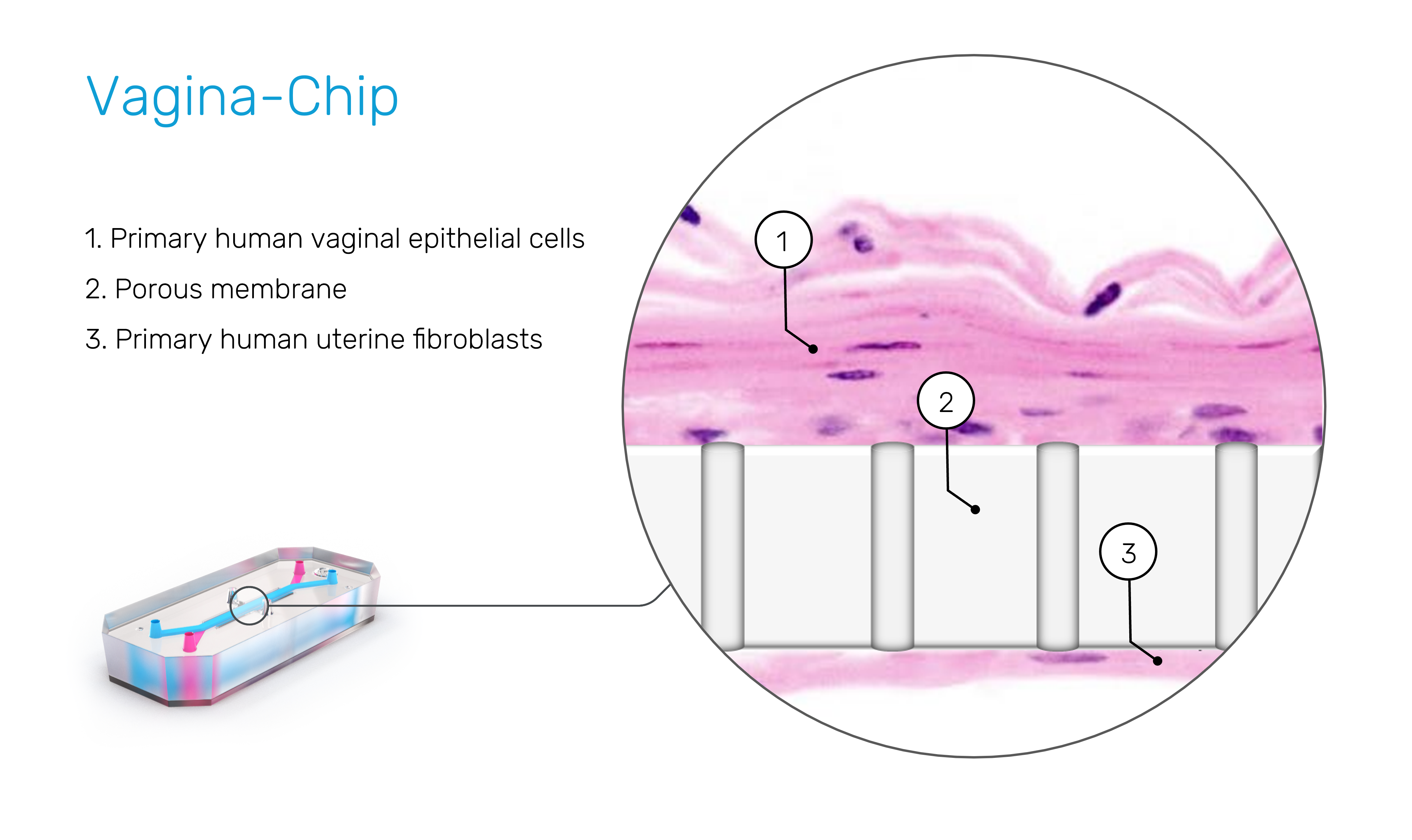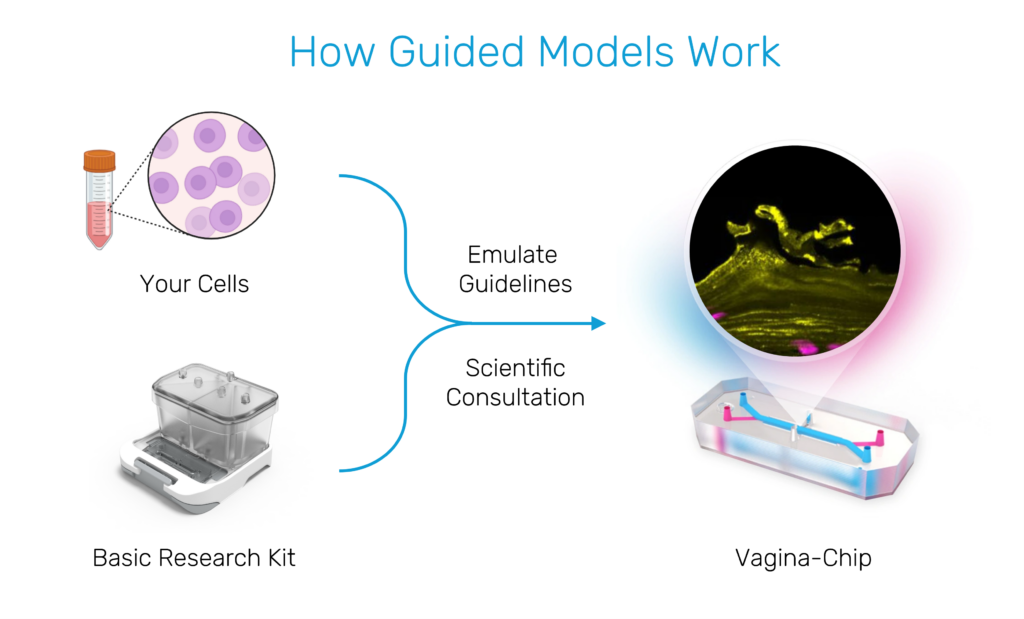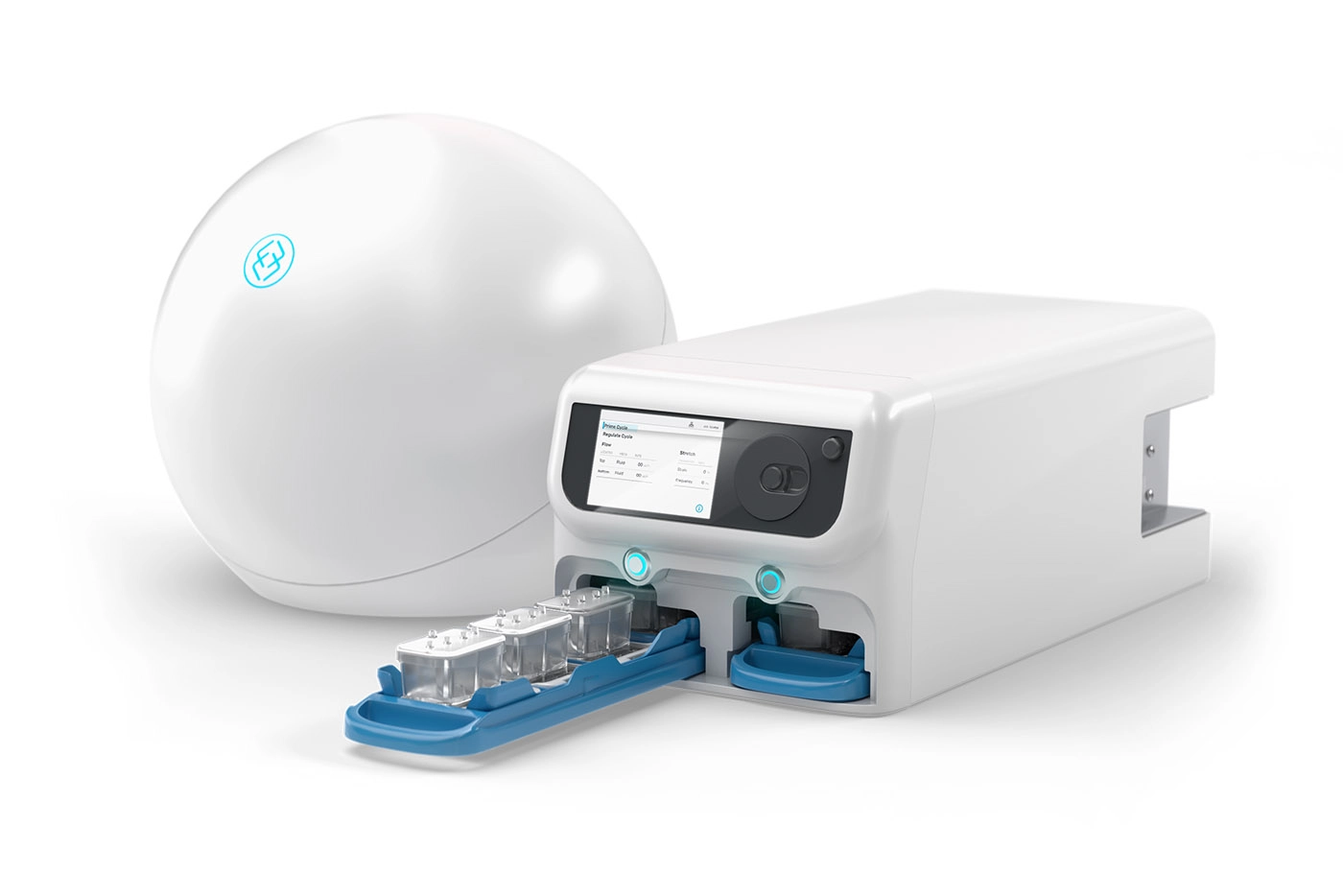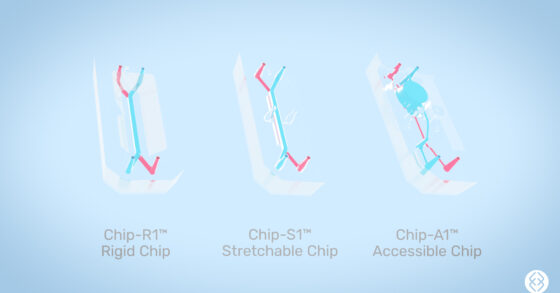GUIDED model
Vagina-Chip
Study host-microbiome interactions and test new therapies in human vaginal mucosa


Model Overview
A human-relevant preclinical model of the vaginal epithelium
The Vagina-Chip faithfully reproduces the vaginal microenvironment to enable preclinical validation of potential therapeutics or evaluation of vaginal epithelium-microbiome interactions.
Benefits
Sustained barrier function
The co-culture of human vaginal epithelial cells with fibroblasts results in a strong epithelial barrier that was maintained for up to 15 days.
Physiologically relevant pH
The vaginal epithelium maintains the physiological acidic pH for optimal cell viability.
Hormonal responsiveness
The Vagina-Chip recapitulates in vivo human vaginal epithelium responsiveness to variations in sex hormone levels, enabling researchers to mimic hormonal fluctuations during the menstrual cycle.

Stable bacterial co-culture
Organ-Chips enable stable co-culture of epithelial cells and bacteria without leading to bacterial overgrowth, enabling researchers to assess optimal and non-optimal microbiomes.

The Vagina-Chip is a Guided Model that Emulate has firsthand experience developing and supporting. It can be created using a Basic Research Kit and a user’s own cell sources. Emulate offers guidelines and support from our field scientists for users to build a Vagina-Chip using one of our Organ-Chip platforms.

Case Studies

Community Publication
Vaginal microbiome-host interactions modeled in a human vagina-on-a-chip
Read this publication to learn how researchers at the Wyss Institute developed a human model of the vaginal epithelium to better understand interactions between the vaginal microbiome and host tissues as well as to evaluate the safety and efficacy of live biotherapeutics products.

Publication Highlights
Tissue-Specific markers

Barrier Function

Responsiveness to Estrogen

Assessing Dysbiosis

Featured Resource

Webinar
Assessing Reproductive Health with a Human Vagina-on-a-Chip
In this on-demand webinar, lead author Gautam Mahajan, PhD, reviews the development of a Vagina-on-a-Chip model that allows for better research into bacterial vaginosis and other diseases. Dr. Mahajan’s work was covered by numerous publications, including the New York Times and Scientific American.
Compatible with Zoë-CM2® Culture Module
The Zoë-CM2 Culture Module is a versatile system for model development & target validation. Capable of culturing up to 12 Organ-Chips at a time, the user-friendly platform gives researchers a window into the inner workings of human biology.








